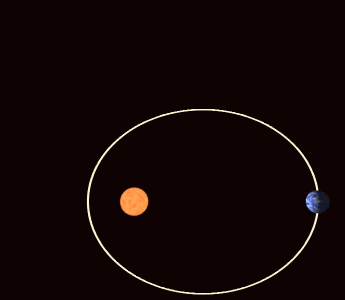Today is the earth’s perihelion, the moment each year when we’re closest to the sun.
Because the earth’s orbit is slightly elliptical, we’re always closest in early January and furthest in July (aphelion), a difference of about 3 million miles. This sounds like a lot but it’s tiny compared to the size of our orbit. The distance has no practical effect on our temperature.
… but …
When the earth gets close to the sun, the gravitational pull makes us speed up as you can see in the animation. Right now we’re moving about 1 km/second faster (2,237 mph) than we do in July and this does affect our seasons. The season surrounding early January (our winter) is 5 days shorter than the season surrounding early July. This is nice for us but too bad for Australia where their summer is short.
This animation shows our fast and slow progress but its real purpose is to illustrate earth’s orbital precession (in an exaggerated way).
Earth’s orbit is not a closed ellipse. Instead it tracks out a little further each time as if drawing a huge daisy in outer space without lifting its pencil. In 21,000 years we come back to where we started and trace the same daisy again.
(animation posted by WillowW on Wikimiedia Commons. Click on the image to see the original with documentation)
